The OLED55B7V is the first 2017 OLED TV from LG Electronics we’ve had the chance to carry out our full suite of indepth tests in our own environment, even though we’ve previously spent some quality time with the flagship SIGNATURE W series and the step-down E7 two months ago. Priced at £3000, the 55in B7 is not the cheapest television on the market, but it’s definitely the most affordable 2017 OLED model (at this time of writing, May 2017) alongside the LG OLED55C7V.
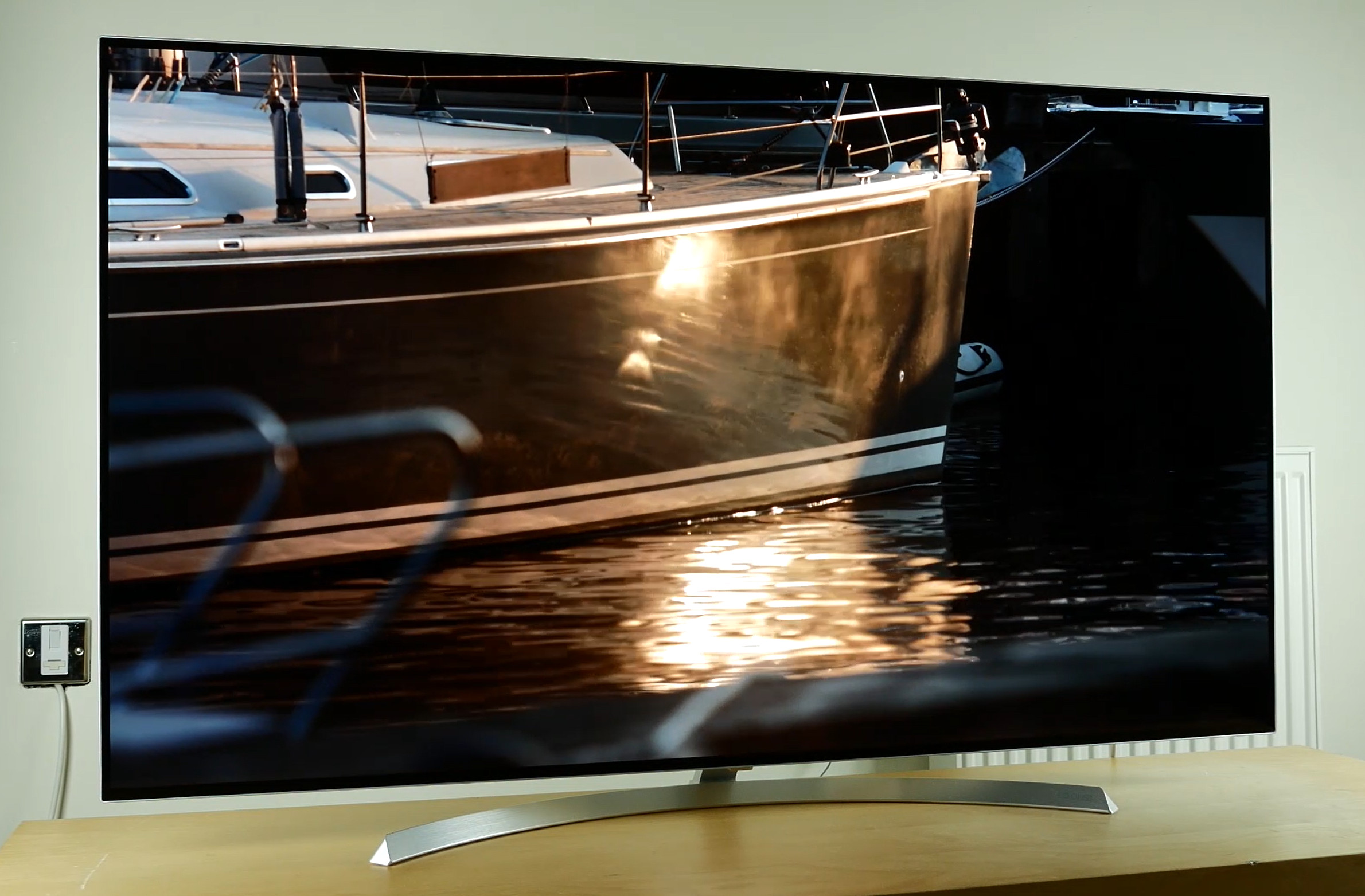
Notable features on the LG OLED55B7 include a 55-inch self-emissive WRGB OLED screen from LG Display with UHD (ultra high-definition) resolution, comprehensive HDR support for HDR10, HLG (Hybrid-Log Gamma), Dolby Vision and Technicolor, integrated Dolby Atmos decoding (though not on 4K Blu-ray’s True HD bitstream), as well as the South Korean manufacturer’s updated WebOS 3.5 Smart TV platform.
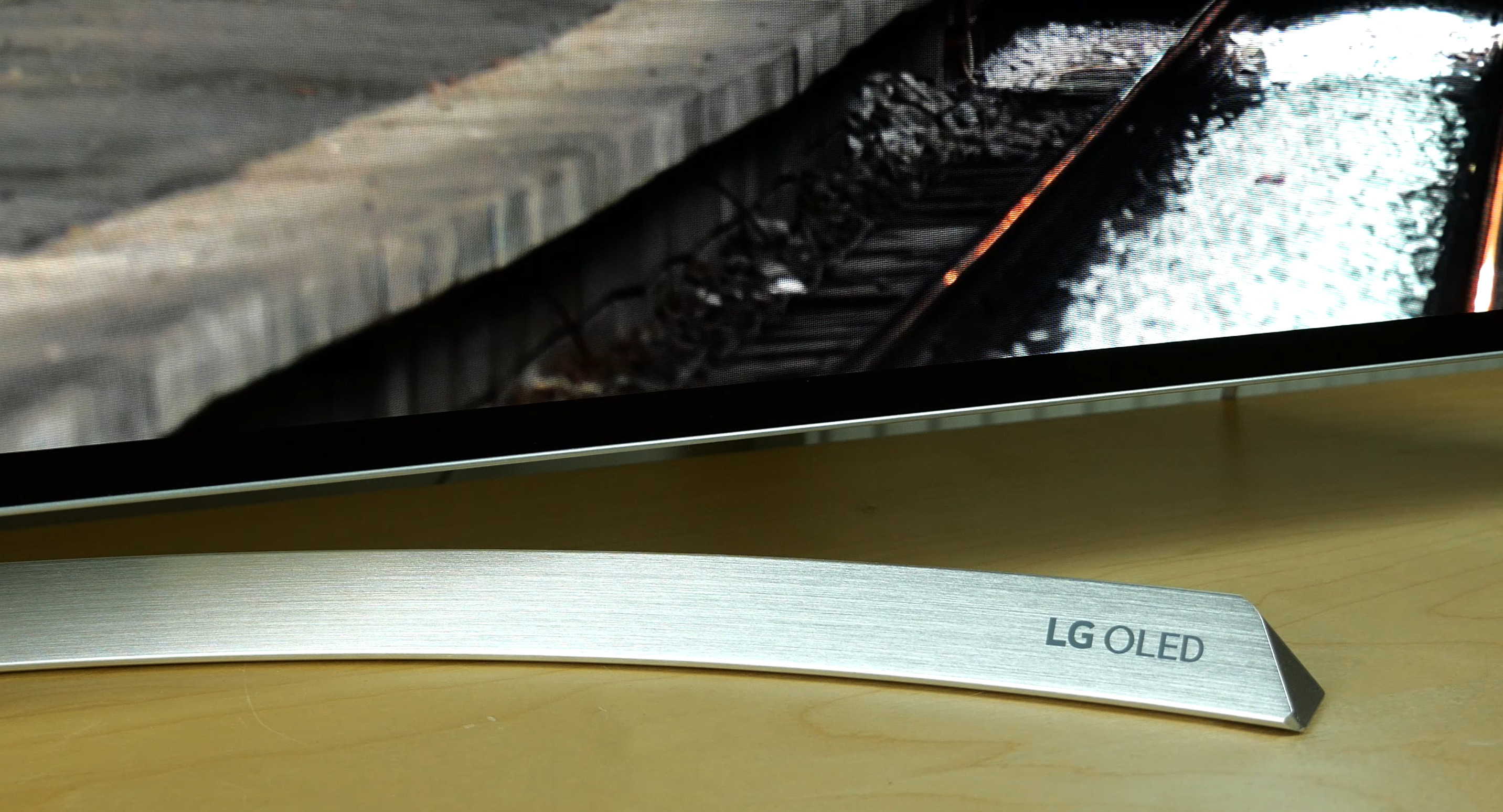
The 55B7 ships with a metallic crescent stand bearing an “LG OLED” inscription, not to mention a “Magic Remote” with intuitive on-screen pointer functionality and newly-added one-click-access Netflix and Amazon Video buttons.
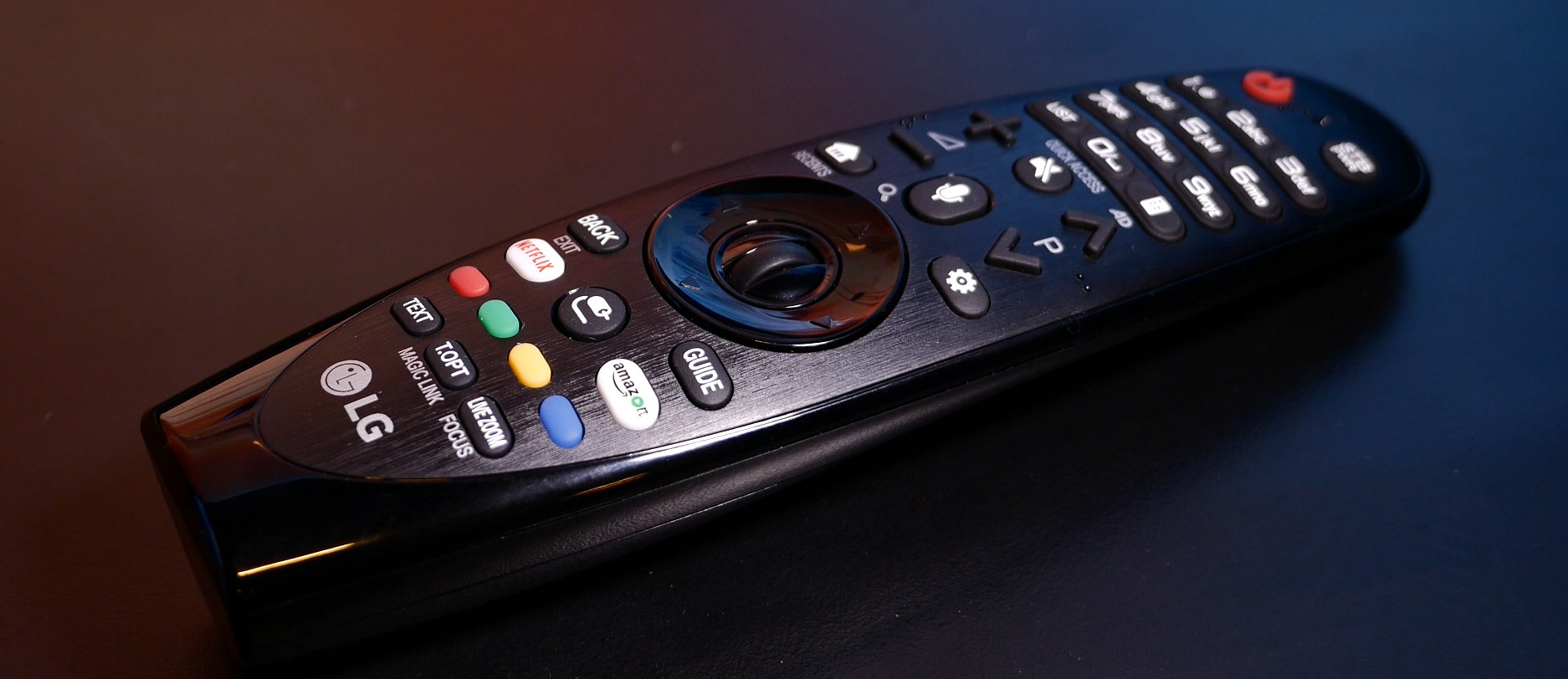
Four HDMI sockets are provided, all specced with HDMI 2.0b (i.e. HDR and HLG-capable) and HDCP 2.2 as verified by a Murideo Fresco Six-G device.
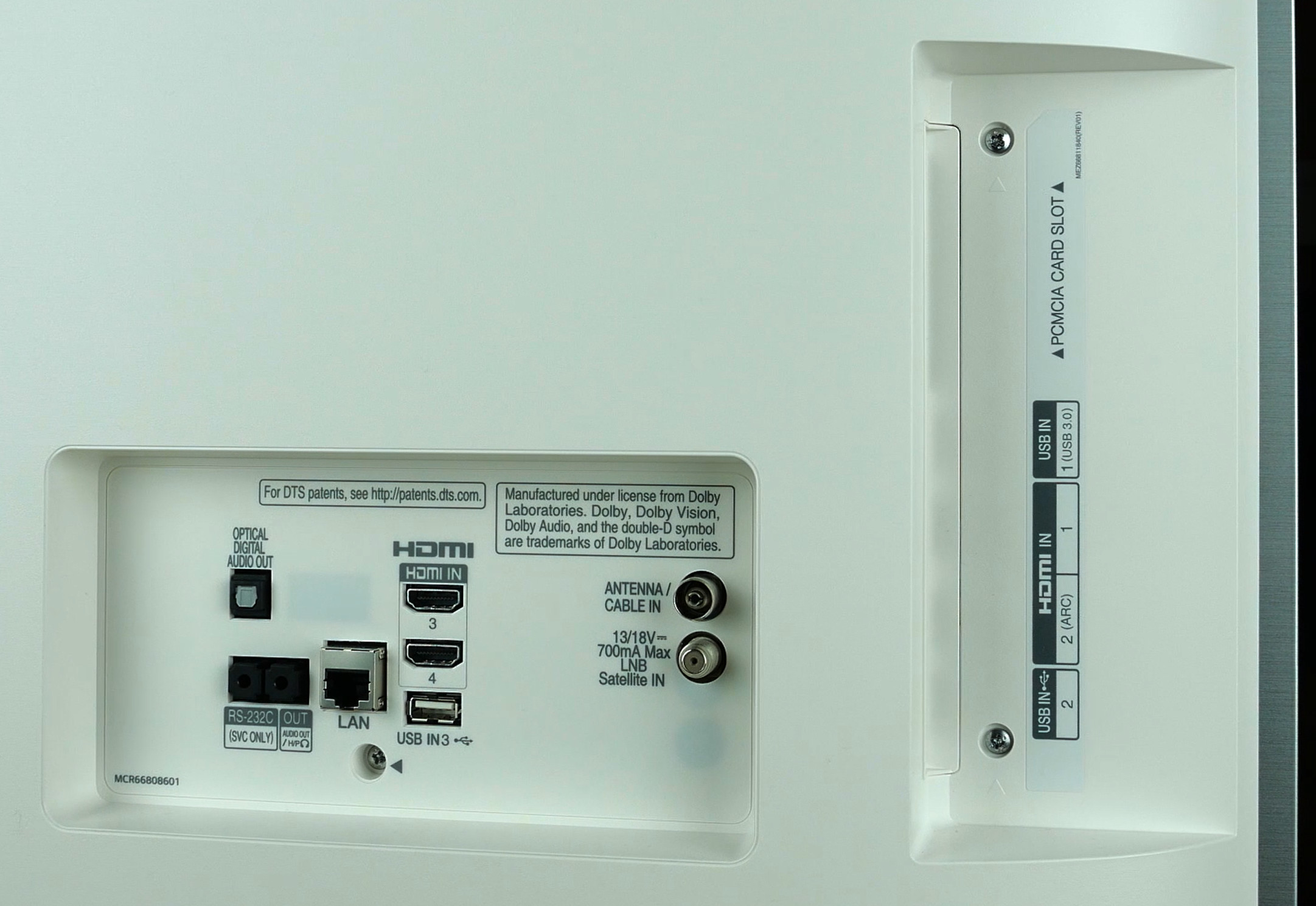
Out-of-the-box colour fidelity in the LG OLED55B7V’s most accurate [Cinema] and [ISF Expert] presets has been improved over the outgoing B6, although after 200 hours of use, a green tint slowly creeped into the dark-to-midbright portion of image, whilst the brighter area became blue-deficient. Proper calibration using the onboard two- and 20-point [White Balance] controls allowed us to achieve excellent greyscale results on our retail unit. Equipment used to calibrate included a Klein K10-A meter profiled against a JETI Spectraval 1511 reference-grade spectroradiometer, Murideo Six-G signal generator, and SpectraCal’s CalMAN software.
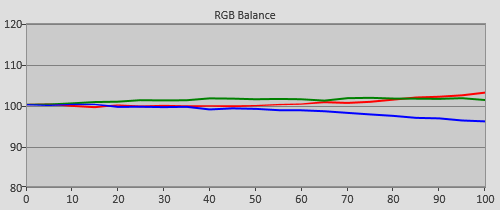 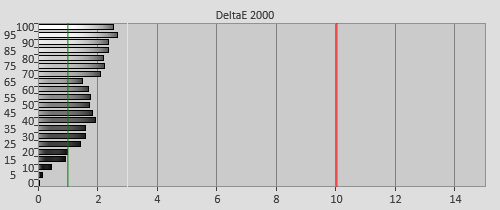 |
| Pre-calibration [ISF Expert] RGB tracking and delta errors (dEs) |
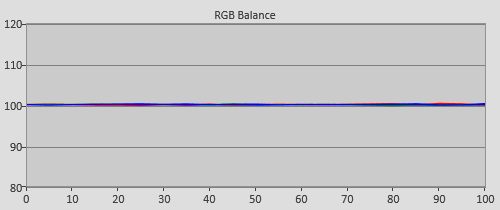 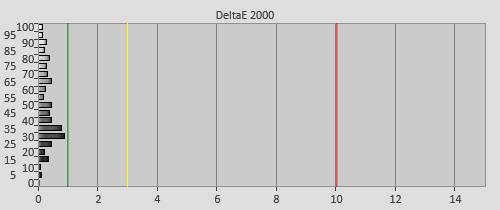 |
| RGB tracking and dEs after 2p & 20p [White Balance] calibration in [ISF Expert] mode |
![Pre-calibrated Gamma tracking in [ISF Expert] mode](https://www.hdtvtest.co.uk/news/wp-content/uploads/2018/04/uhdtv_LG-OLED55B7V_pre-gamma.png) | ![Post-calibrated Gamma tracking in [ISF Expert] mode](https://www.hdtvtest.co.uk/news/wp-content/uploads/2018/04/uhdtv_LG-OLED55B7V_post-gamma.png) |
| Pre-calibration gamma tracking (2.37) | Post-calibration gamma tracking (2.37) |
While better than what we observed on the company’s 2016 OLEDs, excessive adjustments of the [Colour Management] system on the LG B7 still introduced posterisation artefacts. Fortunately, colours clicked into place very nicely after greyscale calibration, with only one out of 140 shades measured in the Colour Checker SG chart exceeding the humanly perceptible threshold of delta error (dE) 3.
![Post-calibration colour saturation tracking in [ISF Expert] mode](https://www.hdtvtest.co.uk/news/wp-content/uploads/2018/04/uhdtv_LG-OLED55B7V_post-strack.jpg) |
| Post-cal colour saturation tracking against Rec.709 standard |
![Post-calibration colour errors in [ISF Expert] mode](https://www.hdtvtest.co.uk/news/wp-content/uploads/2018/04/uhdtv_LG-OLED55B7V_post-strack-de.png) |
| Post-calibration colour errors (<3 not appreciable to the eye) |
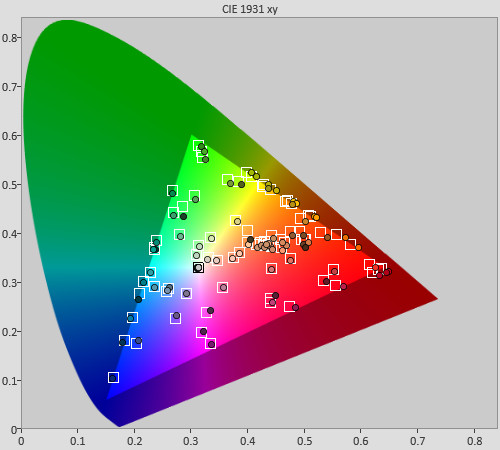 |
| Post-calibration Colour Checker SG test |
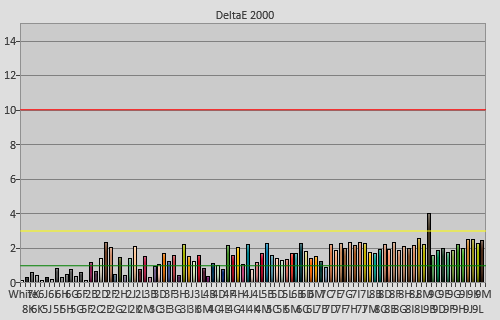 |
| Post-calibration Colour Checker SG errors (<3 not appreciable to the eye) |
| Dead pixels | None |
| Screen uniformity | No vignetting or brightening; near-black thin streaks |
| Overscanning on HDMI | 0% with [Just Scan] enabled |
| Blacker than black | Passed |
| Calibrated black level (black screen) | 0 cd/m2 |
| Calibrated black level (4×4 ANSI) | 0 cd/m2 |
| Black level retention | More stable than 2016 LG OLEDs |
| Primary chromaticity | Very good |
| Scaling | Improved standard-definition upconversion |
| Video-mode deinterlacing | Occasional misapplying of film deinterlacing |
| Film-mode deinterlacing | Passed 3:2 & 2:2 cadence tests in SD & HD |
| Viewing angle (cone) | 166° |
| Motion resolution | 650 with [TruMotion] engaged; 300 otherwise |
| Digital noise reduction | Optional; effective when engaged |
| Sharpness | Defeatable edge enhancement |
| Luma/Chroma bandwidth (2D Blu-ray) | Full Luma; Chroma horizontally blurred |
| 1080p/24 capability | No judder |
| 2160p/24 capability | No judder |
| Measured panel refresh rate | 120Hz |
| Measured peak brightness | 750 cd/m2 10% window; 148 cd/m2 full-field |
| Measured DCI-P3 coverage | 99% |
| Leo Bodnar input lag tester | 21ms in [Game], [PC] & [HDR Game] modes |
| Full 4:4:4 reproduction (PC) | Yes for 1920×1080 & 3840×2160@60Hz in [PC] mode |
| Default [Eco] mode | 104 watts |
| Calibrated [ISF Expert] mode | 88 watts |
| Calibrated [HDR Cinema] mode | 168 watts |
| Standby | <1 watt |
| Macro photo of subpixel structure confirming LG Display’s WRGB OLED layout |
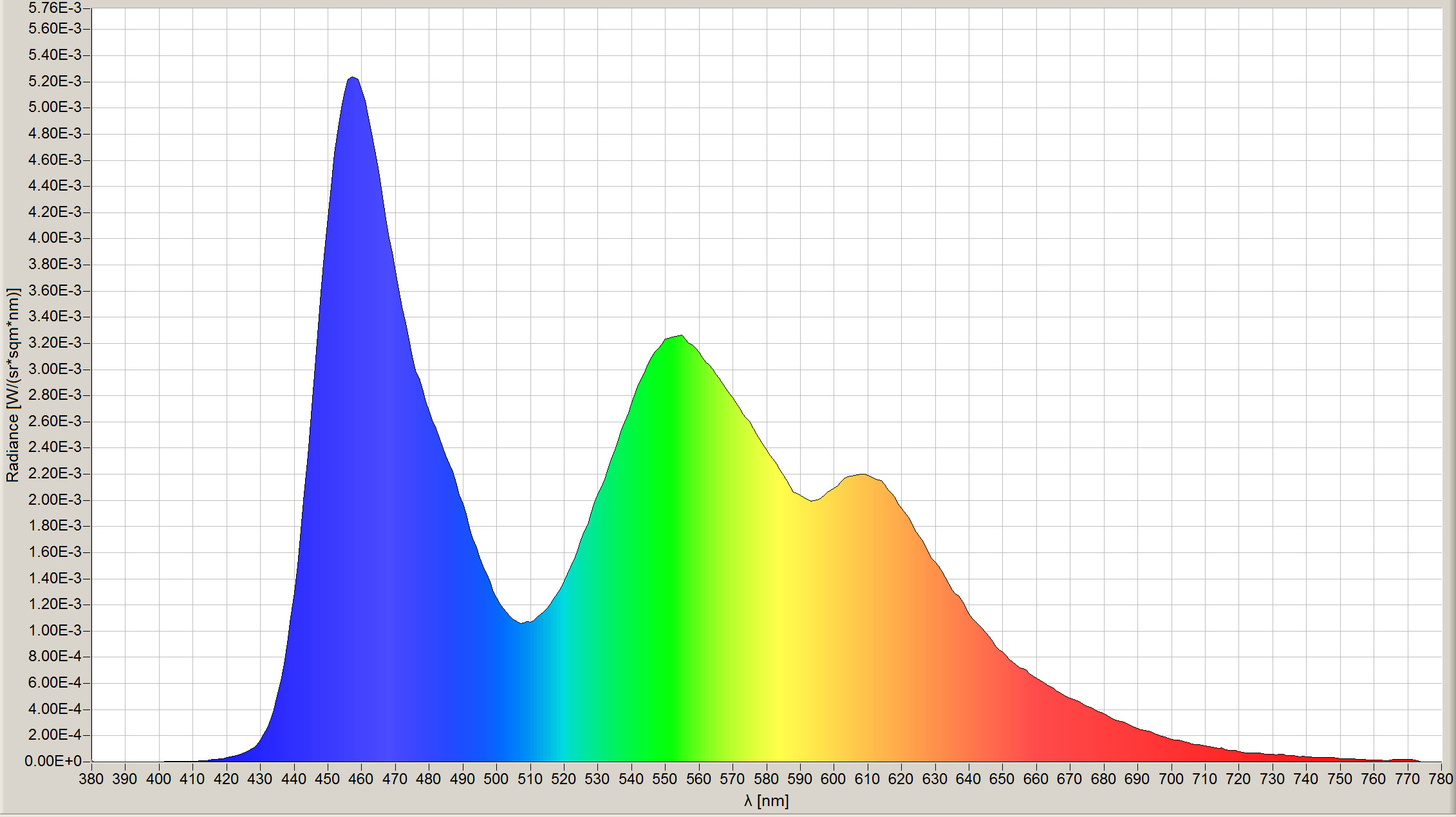 |
| Spectral power of distribution (SPD) captured using a JETI 1511 spectroradiometer |
We won’t dwell on OLED’s unrivalled black-level rendition which is already well-documented. What LG has improved on its 2017 OLEDs including the 55B7 are a finer [Brightness] control, and cleaner near-black processing thanks to higher bit depth, a new decontouring filter plus dithering algorithm. Watching a variety of low-light scenes such as many in the well-mastered Blu-ray disc of Skyfall, shadow detail took on a cleaner and clearer appearance compared with last year’s models, lending a three-dimensional sense of solidity to the entire presentation.
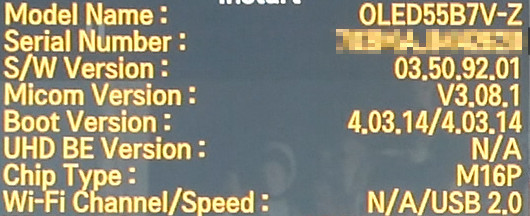
To be fair, we saw similar degree of improvement during our stint with the W7 and E7 in San Francisco, and indeed, a quick check in the service menu confirmed that the OLED55B7V utilises the same “M16P” inhouse chipset – LG certainly wasn’t fibbing when it claimed all the firm’s 2017 OLED televisions feature the same SoC (system on chip).
Reduced ABL (Automatic Brightness Limiter) is another area where LG’s 2017 OLED TVs outperformed their predecessors, and perhaps even competing models from other TV makers this year. If peak white was calibrated to 150 cd/m2 in SDR (standard dynamic range), ABL wouldn’t kick in at all, and was generally less aggressive throughout the luminance range so bright scenes would look brighter. Since all OLED displays can produce 0 cd/m2 blacks anyway, it’s the top end of the picture that would determine the final perceived contrast, and less ABL would help in this regard.
Of course, the lower ABL implemented on the LG B7, C7, E7, G7 and W7 won’t be immediately apparent in every content. Films, for example, typically run an APL (Average Picture Level) of below ten percent especially when the top and bottom black letterbox bars are taken into account. Where LG’s 2017 OLEDs will shine versus the 2016 versions are on computer webpages, adverts with white background, ice hockey matches, and bright splash screens such as the title menu of the AVSHD test disc:
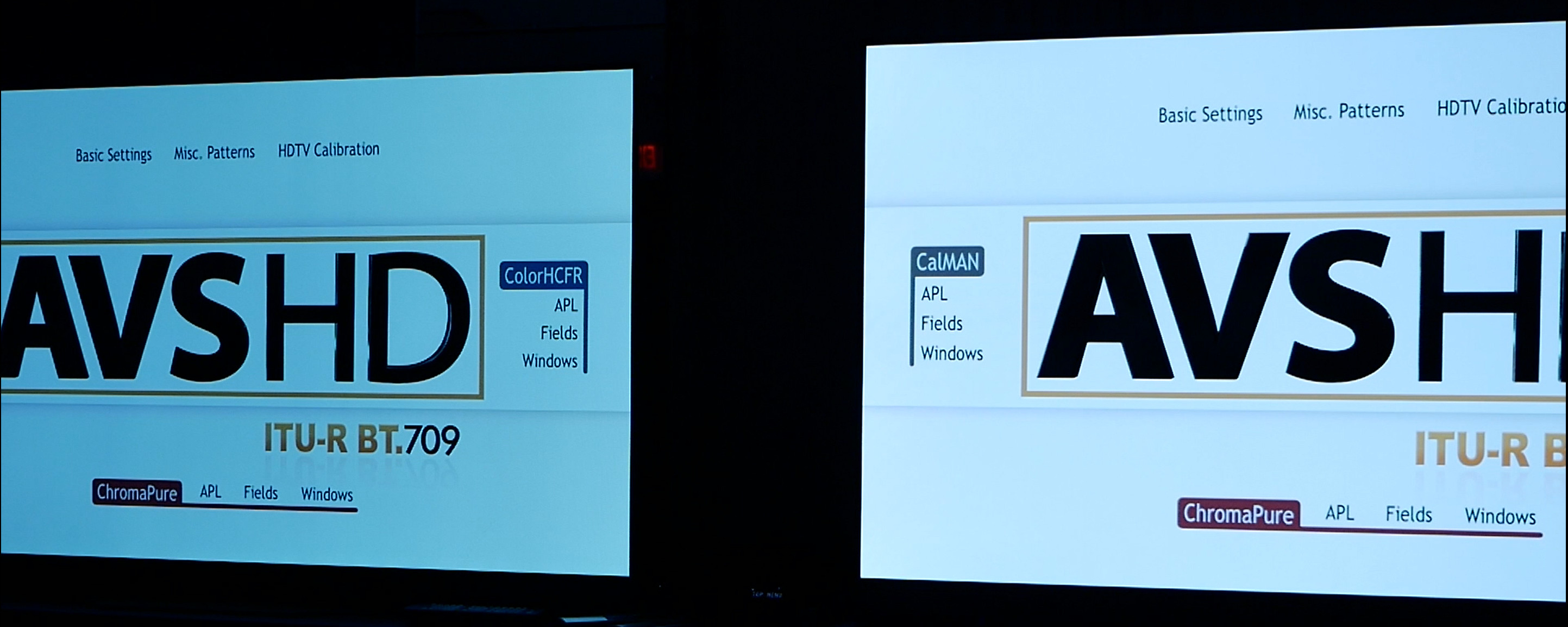 |
| Left: 2016 LG OLED; Right: 2017 LG OLED |
There’s no significant improvement in terms of near-black uniformity on 2017 LG OLED televisions compared with 2016 ones. Our OLED55B7V retail sample exhibited no vignetting or reverse vignetting on 1% to 4% above-black full-field grey rasters after adequate run-in and compensation cycle completion, but there remained some thin vertical streaks which thankfully did not bother us in real-life viewing.
We watched an extensive amount of football on the LG OLED55B7, and were surprised to catch a few instances of tearing artefacts even with [TruMotion] switched off. Trying to diagnose if they were interpolation or deinterlacing artefacts wasn’t easy, so we conducted many tests, and found that the tearing went away if we engaged [Game] mode or sent a progressive rather than interlaced video signal to the television.
Our findings suggested that the LG B7 might be wrongly applying film-mode deinterlacing to video-based material from time to time, particularly in slower passages of play. Note that this may only be an issue in the UK and Europe: in 60Hz-centric countries like the USA, TVs are less likely to be tripped up in this manner due to the clearer distinction between 24Hz and 60Hz frame rates.
Otherwise, we have nothing new to report on the motion clarity of the LG 55B7V OLED. With [TruMotion] disabled, motion resolution came in at the sample-and-hold baseline of 300 lines (as determined via the horizontally scrolling lines in Chapter 31 of the FPD Benchmark Software Blu-ray disc), whereas enabling [TruMotion] more than doubled motion resolution to 650 lines. The [TruMotion] “Clear” and “Smooth” settings introduced noticeable interpolation artefacts and soap opera effect (SOE) to 24fps footage.
![[Trumotion] off](https://www.hdtvtest.co.uk/news/wp-content/uploads/2018/04/uhdtv_LG-OLED55B7V_trumotion-off.jpg) | ![[Trumotion] High](https://www.hdtvtest.co.uk/news/wp-content/uploads/2018/04/uhdtv_LG-OLED55B7V_trumotion-user.jpg) |
| [TruMotion] “Off” | Optimised [TruMotion] “User” |
[TruMotion] “User” lets you customise the deblur and dejudder components separately, allowing for higher motion resolution without SOE, but its interpolation algorithm is still prone to the odd stutter.
The HDR (high dynamic range) performance of last year’s LG OLEDs was less than ideal in several key aspects, and the company’s engineers have worked hard to correct the shortcomings. Partly because of the lessened ABL described before, peak brightness in the B7V’s most accurate HDR preset could be pushed to 750 nits, representing around a 100-nit gain over 2016 models. While an increase of 100 nits didn’t sound like much especially in logarithmic terms, the brighter HDR presentation of LG’s 2017 OLED sets was easily noticeable, since their reduced ABL operated from upwards of 25% APL.
Still, a peak luminance of 750 nits falls short of the 1000-nit, let alone 4000-nit levels to which current Ultra HD Blu-ray titles are mastered, so a decision has to be made to either maintain overall brightness but discard specular highlight detail above 750 nits (technically known as clipping), or preserve such bright highlights through tone-mapping at the expense of darkening the overall image. LG engineers opted for the latter, and as you can see from the following charts, the OLED55B7V undertracked the ST.2084 PQ (perceptual quantisation) EOTF (electro-optical transfer function) standard particularly if MaxCLL was set to 4000 nits, which means the HDR picture would look darker than it should be across most scenes.
Click on the options below to compare the LG B7’s PQ EOTF:
MaxCLL 1000 nits | MaxCLL 4000 nits
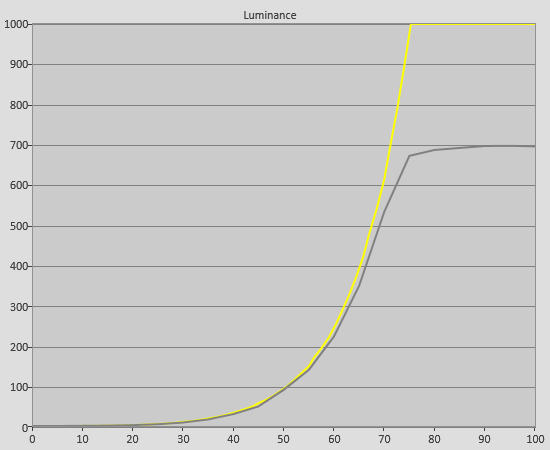
To restore HDR APL closer to ST.2084 PQ EOTF, it’s necessary to engage Active HDR, a feature LG devised to simulate dynamic metadata presentation from static metadata (or even if no metadata is present at all). Since Active HDR is dynamic in nature, its effect couldn’t be accurately documented using traditional PQ EOTF tracking methods, and selected bright scenes (mostly in 4000-nit 4K Blu-rays) still appeared darker than rival LED LCDs that are capable of higher peak brightness.
Beyond improved tone-mapping, 2-point [White Balance] controls are now available in HDR mode (it wasn’t last year), allowing greyscale to be calibrated to a more accurate level for HDR content. The 20-point [White Balance] system on the LG OLED55B7 aligned better than last year’s, though still introduced noise and posterisation artefacts so we avoided it altogether on our review unit since 2p WB was sufficent.
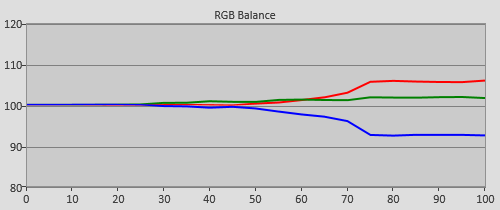 |
| Pre-calibration RGB tracking in [HDR Cinema] mode |
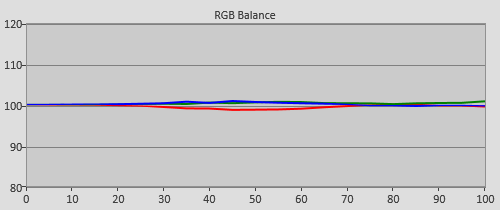 |
| RGB tracking after 2-point [White Balance] calibration in [HDR Cinema] mode |
Even after greyscale calibration, colours (including skin tones) generally looked paler than expected in HDR modes, so based on objective measurements, we had to up the [Colour] value significantly to obtain properly saturated colours. DCI-P3 gamut coverage reached 99%.
![Post-calibration colour saturation tracking in [HDR Cinema] mode](https://www.hdtvtest.co.uk/news/wp-content/uploads/2018/04/uhdtv_LG-OLED55B7V_hdr-strack.png) |
| Post-cal colour saturation tracking against DCI-P3 standard in Rec.2020 container |
We’ve also recorded a bunch of colour volume data using various metrics – CIE L*a*b* both relative and absolute; as well as MDC (millions of distinguishable colours) – provided in the latest beta version of CalMAN, but we’re not entirely convinced any of them accurately reflects actual difference in real-life viewing, so we’ve decided not to publish these numbers for the time being to avoid confusing readers.
Moving on from colorimetry, another area of HDR improvement on the LG B7 was low-light lucidity: there’s less shadow detail crushing going on, whereas on 2016 OLEDs we had to resort to an unconventional circumvention to achieve similar degrees of clarity. However, probably because of heightened above-black delineation, fade-in from black (for example the opening scene in The Revenant) could exhibit a slow-spreading, rippling effect as the pixels transitioned from black to very dark grey.
At the brighter end of HDR videos, we also spotted a phenomonon during cuts to very bright scenes where the LG OLED55B7V would ramp up light output then darken slightly to retrieve more specular highlight detail as tone-mapping kicked in. Such instances were rare and fleeting – not a problem for us.
As was the case in 1080p, slow panning shots in 24Hz 4K Blu-rays were displayed smoothly with no significant telecine judder. Gradients looked reasonably smooth; better than Samsung’s 2016 LED LCDs, though behind the class-leading Sony Bravias in this aspect.
Although engaging [Game] mode resulted in an ultra-responsive lag time (measured using a Leo Bodnar tester) of 21ms, additional benefits could be gained by using another method. It turned out that labelling an HDMI input as [PC] would produce the same low latency, with the added bonus of full 4:4:4 chroma reproduction and accurate colours in the calibrated [ISF Expert] presets.

This [PC] relabelling trick didn’t lower input lag in HDR, so to get a figure of 21ms, it’s necessary to enable [HDR Game] mode where [Colour Gamut] could be switched from “Wide” to “Auto” for more accurate colour reproduction.
The LG OLED55B7V offers the following list of improvements over last year’s OLED55B6V:
Whether it’s worth paying just under double the price for the 55B7 over the 55B6 (current street price £1599) depends on how sensitive you are to the flaws (particularly near-black quantisation noise and posterisation) of LG’s 2016 OLEDs. It’s also worth remembering that the retail price of the 55in B6 was £3000 at launch, so it’s probably a tad unfair to compare the price of a product that’s at the end of its life cycle to a brand new one with proven, tangible upgrades. This time next year the B7 could feasibly drop to £1599 too, but then again who knows what improvements 2018 models will bring.
A few eyebrows may be raised at the award of a “Best Value” badge for a display costing £3000, but at the end of the day, the OLED55B7 is the most affordable 2017 OLED television you can buy, delivering essentially identical picture quality – which should rank among the best you’ll see all year – to LG’s own £8000 flagship 65W7 wallpaper TV.
Note: If you’re considering buying this television, please support this website by making your purchase from our sponsor Crampton & Moore – call 01302 365760 and ask for Richard, quoting HDTVTest for competitive prices and first-rate service.
